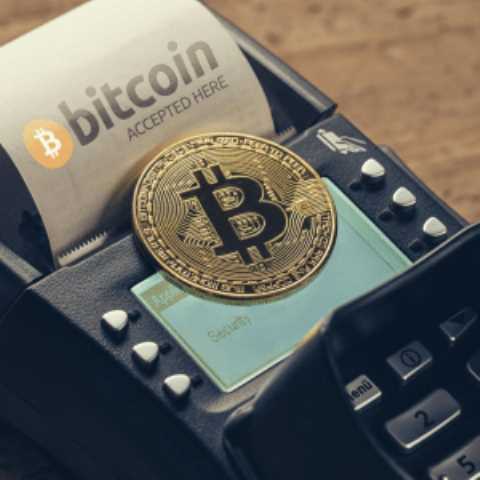
In a nutshell, Cosmos bills itself as a project that solves some of the “hardest problems” facing the blockchain industry. It aims to offer an antidote to “slow, expensive, unscalable and environmentally harmful” proof-of-work protocols, like those used by Bitcoin, by offering an ecosystem of connected blockchains. With Tendermint Core, validators run nodes that maintain a copy of the blockchain’s data. Not every full node is a validator, as there is a limit of 100 validators on Cosmos Hub. Validators who confirm transactions vote on new blocks to be added to the chain. By design, Cosmos allows decentralised application (dapp) developers to build their own blockchains, which enables decentralisation and interoperability throughout the ecosystem.
How do you use Cosmos?
Some exchanges offer the option to trade you ATOM tokens for fiat currencies directly. However, it’s more common for ATOM to be listed against other cryptocurrencies. what is atom coin If this is the case on your exchange, you can swap your ATOM tokens for Bitcoin or Ethereum, and then trading those in for fiat currencies.
What is Polymarket? Decentralized Prediction Markets Explained
The other big players in interoperability are Polkadot (DOT) and Avalanche (AVAX). Both work slightly differently, and have also seen above-average price increases this year. Many countries have allowed the use of cryptocurrency, but the legality status still varies between regions and countries. To check which countries have legalized cryptocurrencies, click here. Blockchains can’t communicate with each other because they all have their own languages and rules. DeFi could be a much bigger ecosystem if it weren’t tied down so much to Ethereum.
- Cosmos solves this by allowing developers to create their own blockchains with their own governance structure.
- This is one of the reasons why the hugely popular Ethereum blockchain began switching from proof of work to proof of stake in September 2022 in its highly anticipated 2.0 Merge.
- Holders can also choose to delegate their ATOM coins with validators instead of running the validator software themselves, which still allows them to receive a portion of the rewards for staking.
- Scalability is another priority, meaning substantially more transactions can be processed a second than more old-fashioned blockchains like Bitcoin and Ethereum.
- Their technology enables an easy creation of blockchains that can communicate with each other in a decentralized way.
- Please note that the availability of the products and services on the Crypto.com App is subject to jurisdictional limitations.
Cosmos Performance
This is why it’s good to see that Cosmos has 255 applications running on its network, including big names like Binance Smart Chain and Crypto.com. You can get ATOM on most large cryptocurrency exchanges exchanges. You can mostly trade for them for cryptocurrencies, but there are some exchanges that offer to trade them for fiat as well. A potential value may lie in it becoming a governance token of Cosmos in the future. This would introduce decentralized management of Cosmos where users would get to vote on governance of the platform. This enables all blockchains on the network to send transactions to each other through their IBC protocol.
Regulation could complicate the decentralized finance (DeFi) industry
It does this by keeping track of the state of each Zone through the Inter-Blockchain Communication Protocol (IBCP). Through this protocol, information can easily travel between any Zone connected to Cosmos Hub. The Cosmos Hub is the first Cosmos-based blockchain to launch on the Cosmos Network. In this article, we discuss Cosmos, a blockchain ecosystem that aims to revolutionise how blockchains interact with one another. Because there is no “mining” involved in PoS, PoS networks often start with a “pre-mine,” where the entire supply of tokens is brought into existence at once. However, like other polling and data analysis methods, Polymarket isn’t foolproof.
Cosmos is being traded on 72 cryptocurrency exchanges, including Binance and KuCoin. If you wish to purchase ATOM, check our guide on how to buy Cosmos in 6 steps. Holders can also choose to delegate their ATOM coins with validators instead of running the validator software themselves, which still allows them to receive a portion of the rewards for staking. Validators stake or lock their ATOMs and run specialized software, which maintains the Cosmos network by proposing new blocks and validating transactions. Past performance is not a guarantee or predictor of future performance. The value of crypto assets can increase or decrease, and you could lose all or a substantial amount of your purchase price.
What is proof of stake?
dApps built on Cosmos
- For the purposes of this tutorial, we’ll show you how to trade USDT for ATOM, but the process is largely the same regardless of which asset you choose.
- Cosmos (ATOM) is a visionary blockchain ecosystem aiming to create an ‘Internet of Blockchains’ by fostering secure communication and interoperability between diverse blockchains.
- For example, Crypto.com users pay fees for Cosmos apps in its native token (CRO), not in ATOM.
- If big exchanges become the majority of validator nodes for any given proof-of-stake token, then most of the network will be concentrated into the hands of a small oligarchy.
- Cosmos also uses a mechanism known as governance, which allows users to vote on proposals, such as network updates or common issues.